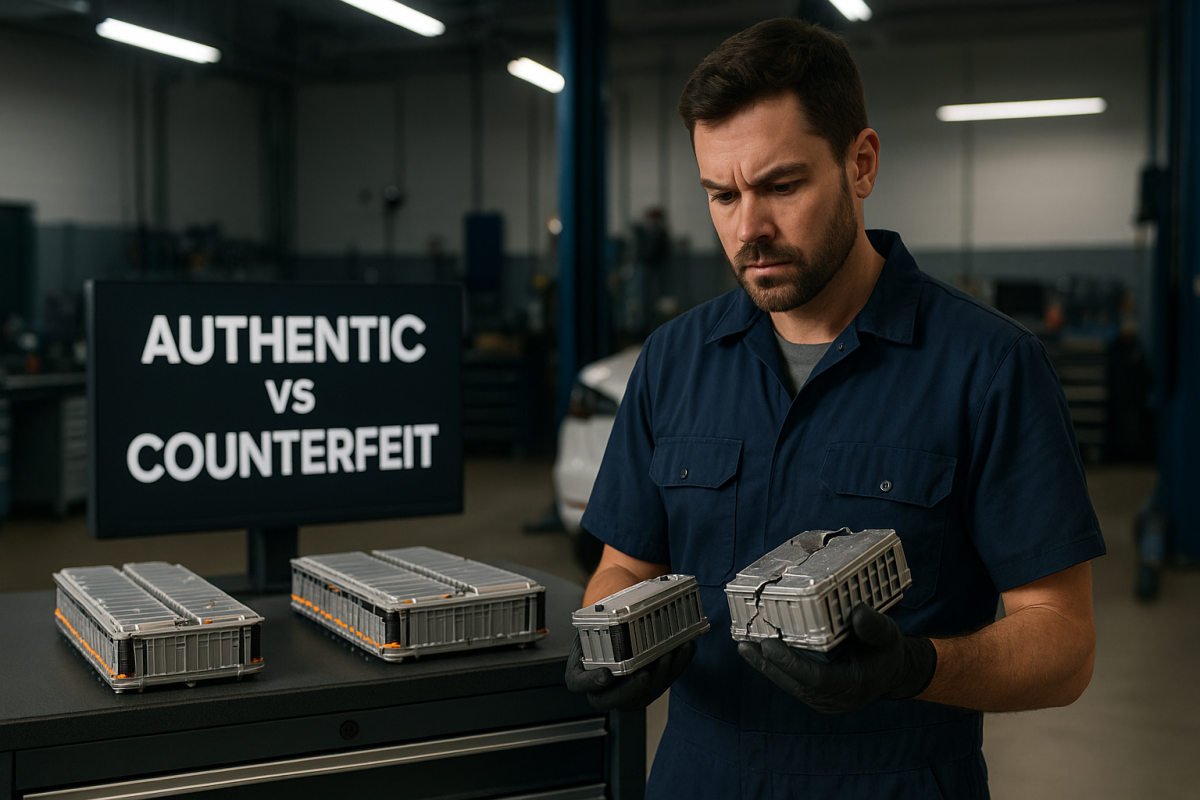EV Parts Alert

Let’s talk about the second-hand EV market—it’s really picking up speed. By 2025, there’s been a massive boom, with a huge spike in sales of used electric vehicles. And that’s great news for folks looking for more affordable ways to go green. But there’s a flip side. Online places like eBay are flooded with what they call “OEM Compatible” battery modules that are way cheaper than the ones direct from the manufacturers. Electrifying.com noted a whopping 58.5% jump in sales of used battery electric cars compared to last year alone.
Potentially Hazardous Bargains

Imagine this: someone buys an out-of-warranty Tesla Model Y and wants to save some money. They take it to a local shop where the mechanic installs a replacement battery module bought online that was advertised as “authentic.” Everything seems fine at first, but within 50 miles, the dreaded “check battery” warning pops up. The culprit? A counterfeit battery module. These knock-offs often have mismatched cells and unstable software that can cause early failures.
The Counterfeit Flood
Counterfeit parts aren’t just limited to batteries; ECUs are also getting hit. A genuine Tesla Model 3 battery can set someone back $20,000 to $28,000, according to findmyelectric.com in 2025. On eBay or Alibaba, though, “OEM Compatible” modules range from just $1,200 to $1,500, which appeals to budget-conscious car owners and mechanics looking to save a buck. Many of these are slapped together with unverified cells, leading to risks like fires due to lacking important safety mechanisms.
Garage and Consumer Hazards
Independent garages are walking a tightrope. They often operate on slim profit margins, so low-priced parts are attractive. However, many of these garages unknowingly install modules with risks like shorted cells or software bugs. This leads to failed repairs, dissatisfied customers, and could seriously hit their reputation. Some shops are investing in diagnostic tools, but these can cost thousands, and implementing them often involves expensive subscriptions and staff training. As such, many choose not to take the plunge.
Regulatory Roulette
Regulations struggle to keep pace with the rapid adoption of EVs. Right-to-repair laws aren’t comprehensive in many U.S. states. Brands like Tesla encrypt their software, making it difficult for third parties to gain access and verify parts authenticity. This controlled environment can inadvertently encourage counterfeiters to fill the gap.
Looking Ahead
As more electric vehicles hit the road and warranties expire, the temptation to cut corners grows. Without stricter enforcement, counterfeit parts pose a growing threat to EV reliability and safety. But for now, the best defense is the old saying: if it sounds too good to be true, it probably is. Dealerships and mechanics should prioritize authentic parts, ensuring everyone’s safety and peace of mind. Auto brands could also help by easing restrictions on part access, allowing legitimate players to squeeze out the counterfeiters.
Mansory M5 Powerhouse
Outlander Camera Recall
Subaru Rex Unveiled
Emission Clash Escalates
Bugatti's Hybrid Leap